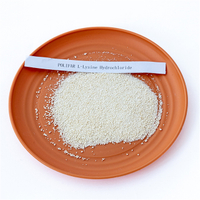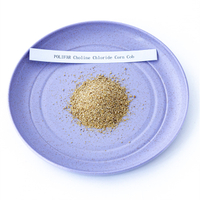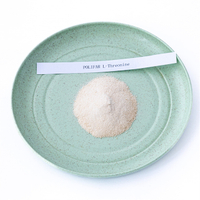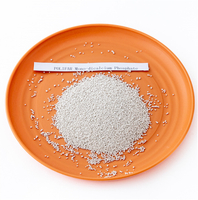Views: 0 Author: Site Editor Publish Time: 2024-01-30 Origin: Site








Ascorbic acid, commonly known as Vitamin C, stands as a cornerstone in the realm of nutrition and food science. Its multifaceted role extends from being a vital nutrient for human health to a versatile additive in various industries. This comprehensive guide aims to explore the origins, classifications, applications, benefits, and market trends of this remarkable compound.
Natural ascorbic acid primarily exists in fruits, vegetables, and plants, but the cost of extraction is prohibitively high. Therefore, it is mainly obtained through chemical synthesis. Its production involves complex chemical processes, typically starting from glucose or sorbitol. Through fermentation or chemical synthesis, manufacturers produce this essential nutrient in various forms, ensuring its availability for diverse applications.
Ascorbic acid exists in different forms, including natural and synthetic variants. Natural sources, such as fruits and vegetables, provide bioavailable forms of Vitamin C, while synthetic forms offer stability and consistency in industrial applications. The classification of ascorbic acid (Vitamin C) mainly includes the following:
1. Natural ascorbic acid: Derived from natural sources such as fruits (oranges, lemons, strawberries, etc.), vegetables (tomatoes, spinach, peppers, etc.), and some plants (rose hips, acerola cherries, etc.).
2. Synthetic ascorbic acid: Produced through chemical synthesis methods and commonly used in industrial production and food additives. Synthetic ascorbic acid shares the same chemical structure as natural ascorbic acid but is more commonly used in commercial applications due to lower production costs.
3. Bio-synthesized ascorbic acid: Produced through microbial or other biotechnological processes. This classification of ascorbic acid is often considered a sustainable and environmentally friendly alternative, as it harnesses the natural metabolic pathways of microorganisms to synthesize Vitamin C.
These classifications reflect the different sources and production methods of ascorbic acid, but they are essentially similar in chemical structure and biological activity. Understanding these classifications helps optimize its use across various sectors.
E300 ascorbic acid, also known as Vitamin C, is a common food additive with various application areas. Here's a detailed introduction to its main application fields:
1. Food Industry: Ascorbic acid is widely used in the food industry as an antioxidant and preservative. It prevents food oxidation, spoilage, and discoloration, thereby extending the shelf life of food products. Particularly in processed meat products, fruits and vegetables, juices, sauces, biscuits, and bread, ascorbic acid is commonly added to maintain the color and freshness of food.
2. Beverage Industry: Ascorbic acid is also a common additive in the beverage industry. It prevents oxidation and discoloration of juices and beverages, maintaining their color and stable taste. Additionally, ascorbic acid can be used to adjust the acidity of beverages and enhance their flavor.
3. Pharmaceutical Industry: As an important nutritional supplement, ascorbic acid is widely used in the pharmaceutical industry. It often appears as a medicinal form of Vitamin C, used to treat Vitamin C deficiency, colds, and other related diseases. Additionally, ascorbic acid is used as an antioxidant and dietary supplement.
4. Cosmetic Industry: Ascorbic acid also has significant application value in the cosmetic industry. Due to its antioxidant properties and ability to promote collagen synthesis, ascorbic acid is often added to skincare and beauty products to reduce skin aging, lighten pigmentation, and brighten the complexion.
5. Other Fields: In addition to the food, beverage, pharmaceutical, and cosmetic industries, ascorbic acid also has applications in other fields. For example, it can be used as reagents and reducing agents in certain chemical laboratories, as well as in industrial processes such as leather processing and paper bleaching.
The health benefits of ascorbic acid are well-documented and diverse. As a potent antioxidant, it scavenges free radicals, reducing oxidative stress and bolstering the immune system. Moreover, ascorbic acid plays a crucial role in collagen synthesis, supporting wound healing, tissue repair, and maintaining skin elasticity.
Beyond its physiological benefits, ascorbic acid exhibits potential therapeutic effects in mitigating the symptoms of common colds, reducing the risk of chronic diseases, and improving overall well-being. Its status as an essential nutrient underscores its importance in maintaining optimal health.
The market trends of ascorbic acid are influenced by various factors. Here are some key trends:
1. Rising Health Awareness: With increasing focus on health, there is a growing demand for Vitamin C and antioxidants. Consumers are inclined towards choosing foods and beverages rich in ascorbic acid to boost their immune system, slow down aging, and prevent diseases.
2. Emergence of Functional Foods and Beverages: More consumers are seeking foods and beverages with specific nutritional value and health benefits. As a crucial nutrient and functional ingredient, ascorbic acid is widely used in functional foods and beverages to meet consumer demands.
3. Demand for Sustainability: With growing awareness of sustainability, consumers are increasingly concerned about the source and production process of food additives. Therefore, more companies are seeking sustainable production methods, including bio-synthesis and natural extraction, to produce ascorbic acid.
4. Growth in Emerging Markets: With the development of the global economy and population growth, there is a continuous increase in demand for ascorbic acid in emerging markets. Particularly in regions like Asia and Latin America, consumers' focus on health and nutrition is driving the growth of the ascorbic acid market.
5. Introduction of Innovative Products: Companies are constantly introducing new ascorbic acid products, including supplements, functional foods, beverages, and cosmetics. By launching innovative products, companies can better meet the needs of different consumer groups, promoting market growth and expansion.
In summary, the ascorbic acid market shows continuous growth and development trends in aspects such as rising health awareness, emergence of functional foods, demand for sustainability, growth in emerging markets, and introduction of innovative products.
Ascorbic acid embodies the convergence of science, nutrition, and industry, exerting a profound influence on various aspects of modern life. From its origins in biochemical pathways to its applications in food preservation, health promotion, and beyond, its versatility and significance continue to evolve.
As we navigate an era characterized by health consciousness and technological innovation, the role of ascorbic acid remains indispensable. Embracing its potential, both as a nutrient and a functional ingredient, promises to unlock new opportunities for improving human health, advancing sustainable practices, and enriching diverse industries.






